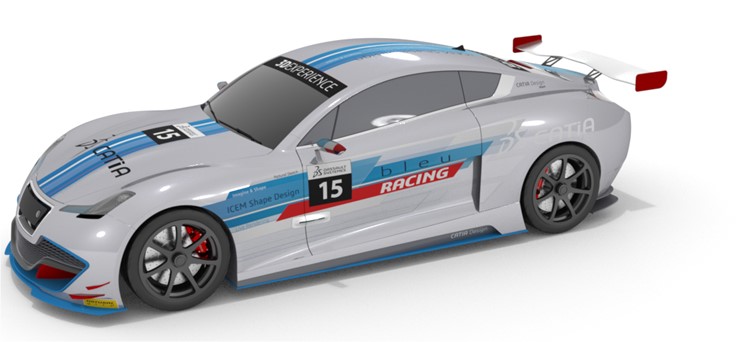There is room for only one car in the Winner’s Circle and every motorsport race team has that singular ambition. However, the road to the finish line is filled with obstacles, including strict time and budget restrictions, stringent technical regulations, and the need to make split-second decisions –seemingly ‘on the fly’.
The Multiphysics Simulation Toolbox
To overcome racecar development challenges, teams have embraced the use of computer-aided design and computer-engineering software for decades. Today, most race teams use a wide range of simulation codes to reach the best vehicle performance. Through its SIMULIA Brand, Dassault Systèmes develops and delivers a broad range of multidiscipline, multiphysics simulation applications that are used extensively in Automotive, Aerospace, and the motorsports industries.
Race teams across all platforms, face limited time and budget for wind tunnel testing. This makes it critical for teams to leverage Computational Fluid Dynamics (CFD) for Aerodynamic analysis. Advanced CFD simulation capabilities such as those provided by SIMULIA PowerFLOW enable engineers to analyze the turbulent airflow around a vehicle and optimize its aerodynamic design. SIMULIA XFlow is used to simulate engine lubrication and fuel tank sloshing effects. The use of robust and proven CFD applications reduces the need for physical testing and helps team make design improvements that help improve vehicle, handling, and fuel efficiency.
Another key simulation technology is Finite Element Analysis (FEA), which is used to evaluate the structural integrity of the body, chassis and critical components. SIMULIA Abaqus provides linear and nonlinear structural analysis capabilities. This makes it possible to analyze the behavior of a wide range of materials used within a racecar body and chassis, including composites, metals, plastic and rubber. Combining FEA with SIMULIA’s design optimization technology enables engineers to optimize the structural design for maximum strength and stiffness while minimizing weight.
Abaqus is also used to perform thermal-mechanical analysis ranging from thermal expansion in engines to friction-driven heat transfer such as in brake systems to fully coupled temperature-displacement simulation, in which motion affects heat transfer and heat transfer affects motion. PowerFLOW enables engineers to analyze airflow cooling for engines, brakes and cockpits to evaluate and improve designs to prevent…
Click Here to Read the Full Original Article at Racecar Engineering…

